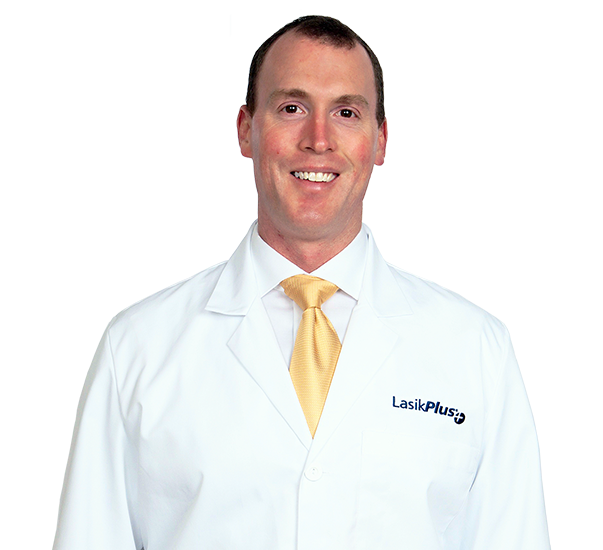-
See the Difference: Save $1,000 on LASIK , Find More
*Must mention this promotion and be treated in May of 2025 to qualify. $1,000 off for both eyes on standard Wavelight price, $500 off for one eye. Cannot be combined with any other offers.
The Four Types of Eye Protection You Need to Use
While it might seem obvious, it bears repeating. Protecting your eyes from elements that can cause injuries, such as particles and sunlight, is extremely important. Consider that a moment had a proper eye protection can prevent a lifetime of problems.
The following statistics from the U.S. Department of Health and Human Services’ Federal Occupational Health bureau make the need for and importance of eye safety all the more apparent:
- Eye injuries occur at a rate of 2,000 per day.
- Flying objects, falling objects and sparks cause 70 percent of eye injuries in U.S. workplaces.
- More than 90 percent of eye injuries are preventable with the use of proper safety eyewear.
Eye protection means more than just wearing the contact lenses or glasses you use for vision correction. It includes safety glasses, goggles and face shields that adhere to American National Standards Institute (ANSI) standards. ANSI-approved protection will be marked with “ANSI Z87.1” on the lens or frame. They are available at most hardware stores.
The type of eye protection needed depends on the activity you are involved in.
Protection From Light
Long-term exposure to ultraviolet (UV) light can damage the retina of the eye and cause cataracts, macular degeneration and growths on the eye. The American Optometric Association recommends wearing sunglasses or goggles year-round that block both UVA and UVB rays. Look for sunglasses that block 99 to 100 percent of UV rays. Of course, sunglasses can be fashionable as well as practical, but the best protection comes from wraparound styles that prevent the sun’s rays from entering from the side. If using a tanning bed, wear goggles to protect your eyes from indoor UV light.
Protection at Home
The American Academy of Ophthalmology and the American Society of Ocular Trauma recommend that you wear ANSI-approved protective eyewear when performing common household activities that pose a risk of eye injuries. Eye protection should be worn when using hazardous chemicals or other substances that could damage eyes upon contact, or when other harmful material could unexpectedly fly into the eyes.
When applying fertilizer and pesticide, for example, wear goggles to protect your eyes from particle contamination and splashes. Protect your eyes from rocks, debris and dust when mowing, as well as branches, flying limbs and particles when trimming or cutting wood. If you are using a lawnmower, saw, sander, drill or any other power tool, safety glasses should cover both the front and sides of your eyes.
Protection When Playing Sports
Athletic eye protection should meet the specific requirements of that sport. Requirements are typically established and certified by the sport’s governing body and/or the American Society for Testing and Materials (ASTM). ASTM establishes standards for various racket sports, lacrosse, hockey, paintball, baseball and Alpine skiing. For example, helmets and visors protect the eyes when playing hockey and bicycling/racing, and eye shields protect the eyes when playing football. Also, wear goggles when swimming to protect the eyes from salt or chlorine in the water. Make sure your protective eyewear has UV protection when participating in outdoor activities, such as snow skiing or water-skiing.
Protection at Work
The Occupational Safety and Health Administration (OSHA) establishes standards for what protective eyewear must be worn on the job. The eye protection for specific work situations depends upon the nature and extent of the hazard, the circumstances of exposure and other protective equipment used. For example, certain careers, such as firefighting and construction, require specific eye protection as part of the equipment. A company’s human resources department is commonly in charge of overseeing OSHA compliance to ensure worker safety.
Make sure your eye protection fits properly. The National Institute for Occupational Safety and Health recommends that safety glasses rest firmly on top of the nose and close to, but not against, the face.
Ultimately, the key to preventing eye injuries is to take a proactive approach to sustaining the healthy vision. In addition to proper safety eyewear, early detection and treatment of eye conditions and diseases help maintain good vision.
YOU MIGHT ALSO LIKE...
VISION CENTERS NEAR ME
Enter your zip code, city, or a doctor name below to find a vision center.
Find out if LASIK is right for you
Congratulations!
Your vision issues can most likely be corrected with a LASIK procedure. Schedule a free consultation today.
Answer 5 simple questions to see if you are a candidate
What is your age group?
Do you wear...
With corrective lenses, do you have...
Have you ever been told that you have astigmatism?
Have you ever been told that you have dry eyes?
Request an Information Kit
Learn about your surgeon, the latest advanced technology, procedures, options and benefits, financing options, and what to expect from your LASIKPlus experience.









